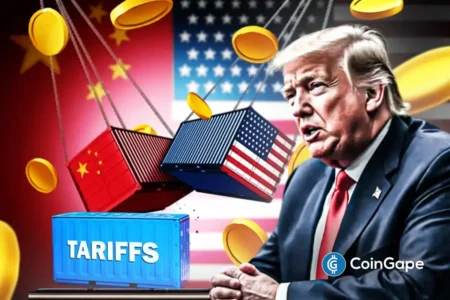The Future of Stablecoins: A Regulatory Perspective from Federal Reserve Governor Michael Barr
In a significant address at the 2025 D.C. Fintech Week, Federal Reserve Governor Michael Barr discussed the implications of the newly proposed GENIUS Act on the regulation of stablecoins. While recognizing the advancement of this legislation, Barr voiced concerns about its effectiveness in providing adequate safeguards for holders and ensuring the long-term stability of the overall system. He highlighted the importance of enhanced regulatory frameworks in addressing the complexities surrounding digital assets while leveraging their potential benefits for payment settlements.
Recognizing the Role of Stablecoins in Global Payments
Stablecoins have emerged as a powerful tool in modern financial systems, facilitating faster and more efficient payment processes. In his speech, Barr emphasized that these digital currencies could markedly improve payment infrastructures worldwide. He asserted that with appropriate backing and regulation, stablecoins could enhance liquidity and efficiency for both consumers and businesses alike. By adopting a regulatory stance that embraces the potential of stablecoins, certain U.S. states, such as North Dakota, have already initiated their own stablecoin projects, exemplifying the growing interest and applicability of this technology.
Stricter Regulations to Prevent Risks and Confusion
Barr underlined the necessity for stricter regulations to prevent regulatory arbitrage and consumer confusion as the market for stablecoins continues to evolve. He pointed out that while the GENIUS Act does require stablecoins to be backed by highly liquid assets, such as U.S. Treasury bills, it falls short in addressing all potential risks. Barr cautioned that certain reserve assets could lose value during times of market stress, particularly through uninsured deposits or foreign-backed instruments. This gap in the regulatory framework poses risks not only for consumers but also for the overall financial ecosystem.
The Imperative for Unified Regulatory Standards
In his address, Barr further advocated for a unified regulatory approach to enhance trust in the burgeoning stablecoin landscape. He articulated that the technology underpinning stablecoins has notable benefits for global payments, particularly in developing economies where efficient money transfer mechanisms can dramatically lower transaction costs. However, he warned that without clear guardrails, the innovation could lead to increased risk exposure for consumers and financial systems alike.
Addressing Fragmentation Among Regulators
A potential risk highlighted by Barr involves the fragmentation of regulatory oversight between federal and state authorities. He expressed concerns about varying regulations that may encourage corporations to exploit the most lenient jurisdictions. This lack of coordination may create an environment ripe for regulatory arbitrage and undermine consumer protections. Barr’s dialogue reflects a pressing need to harmonize rules across jurisdictions to foster a safe environment for stablecoin operations.
Enhancing Consumer Protection and System Stability
Barr’s address did not merely focus on the demands of regulatory bodies; he also engaged with the broader implications for consumer protection. By advocating for more robust regulations, he envisions a framework capable of safeguarding consumers and maintaining system integrity. As indicated by his remarks, the challenge lies in ensuring that regulatory frameworks are strong enough to foster trust, facilitate innovation, and protect consumers simultaneously. This balance is critical for the future success of stablecoins in the financial landscape.
A Strong Future for Stablecoins Depends on Credible Regulation
In conclusion, Fed Governor Michael Barr’s insights into the GENIUS Act underline both the promises and pitfalls of stablecoins. While he acknowledges their potential to transform payment systems and supports the evolving regulatory landscape, Barr stresses the importance of establishing thorough safeguards to mitigate inherent risks. The future of stablecoins hinges on credible regulation capable of preventing past missteps in financial supervision while embracing the innovations that these digital assets can bring to global payments. As the dialogue surrounding stablecoins continues, the call for a balanced regulatory approach remains at the forefront of efforts to harness their full potential while ensuring consumer protection and system stability.

![Bittensor [TAO] Falls 15% Following $48 Million in Derivatives Outflows: Buyers Enter the Market](https://icoinmarket.com/wp-content/uploads/2025/10/Abdul-2-6-1000x600.webp-300x180.webp)














